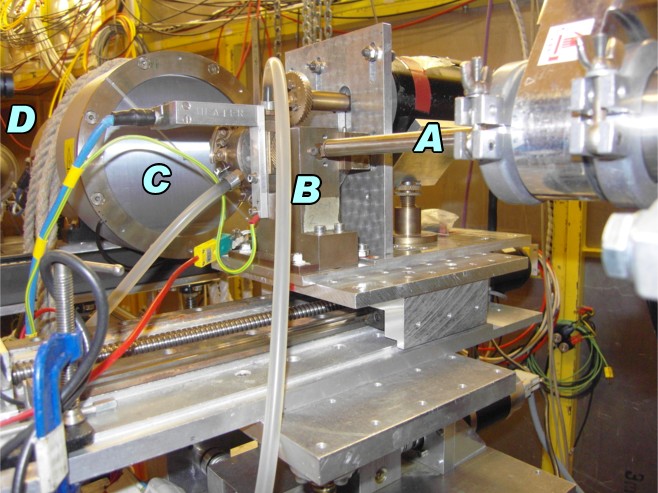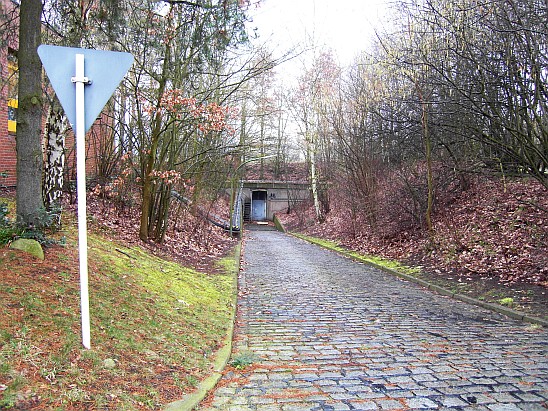All these rings were originally built as particle accelerators, but in 1962 Ruprecht Haensel was asked to find out for his PhD thesis whether anything useful could be done with the “by-product” synchrotron radiation that DESY would be generating. After an eventful studentship, including standing in shirt and underpants sweeping out floodwater from an experimental bunker, he obtained a decidedly affirmative answer. Despite this, however
Particle physics experiments always had priority, so our work had to take a back seat. Most particle physicists at DESY considered our work to be a kind of waste recycling and affectionately called us “parasites”.Conditions at that time were very primitive. The researchers crouched behind a safety wall and pulled samples into the X-ray beam with one wire and out with another.
Ruprecht Haensel, [1]
While HERA has recently been put into cold storage, DORIS and PETRA, although overtaken as particle accelerators by you-know-what and thingummy-across-the-pond, have had second and third lives as generators of synchrotron radiation. The massive PETRA III, which encircles the DESY campus at Hamburg (there’s another campus at Zeuthen near Berlin) is one of the most intense X-ray sources in the world. One needs these intense sources to be able to catch process that are occurring in a tiny fraction of a second, rather like freezing the action with a stroboscope.
The older DORIS, even so, still has life in her, and a couple of weeks ago I paid may second visit there to study our polymers. However, I’m not going to go into detail about our own work, but rather to tell you about life at the beamline.
Our work is carried out at the small angle scattering beamline A2. Classical X-ray scattering, as brought to the world by Max von Laue followed by Willam Henry Bragg, occurs at wider angles and gives us a handle on the interatomic distances and directions in crystals. Small-angle scattering studies much larger structures, such as protein and lipids in biological, and polymer crystals (our own thing.)
So now to the pictures. Here’s inside the hutch, where the X-rays come out from the source and down a narrow evacuated tube A, through a window in our apparatus B, out into a cone C and down a long evacuated tube D.
(A simple question – do particle physicists ever bring their own apparatus?)

The X-rays travel down the evacuated tube of the long camera, and out into the detector seen in the next picture. This detector is a sophisticated piece of apparatus, and our beamline scientist is most concerned that the users do not damage it by overloading it.

After loading the sample, one emerges from the hutch and activates the safety locks. This means closing the door, activating the search process (to check that no other lifeforms are present), holding down the key behind the wall with the right hand, opening the door and emerging, and while keeping the key pressed taking hold of it with the left hand through the “cat flap”, closing the door, then removing the key and taking it to the box to activate the shutter.
.jpg)
The “pussflap” may seem like a weak link in the safety procedure, but it does operate like one of those signalling procedures on the Indian Hill Railways that ensure that two engines are not travelling in opposite directions on the same stretch of single-track railway – it works! It quickly becomes second nature, and there have been no reported cases of breach of the flap by hamsters during beam up time.
Now here is the desk we work at. A is the computer that controls the detector counting, B displays the results and allows some analysis, C is the computer that controls our apparatus, and D is a video monitor that allows us to check that the wheels are going round at the right time.

Working at this desk, one hears two characteristic sounds. On some of the other beamlines, there is a Tannoy warning that the shutter is opening – Achtung! Der Beamshutter F3 öffnet! When a lot of these go off all together after a beam refill, it sounds as if James Bond has crossed the Iron Curtain into former East Germany, and has activated a destruct sequence in some secret military installation.
As for the other, in the experimental hall here is a raised walkway with platforms, and from one of these, almost over our heads, there sometimes comes the sound of Table Football in action (Subbuteonics?)
Now we leave the experimental hall and take a walk to the canteen or hostel. On the DESY campus they allow trees to grow right up near buildings, and if they have to be cut down for a building programme they are quickly replaced. There are lots of trees full of singing (and sometimes fighting) birds. The path here leads down to a linear accelerator, and is signed Bei Glatteis gesperrt, warning one to keep off it when there is black ice.


At the end of winter one can still see puffballs like this.
Wending one’s way to the canteen from the experimental hall, one passes behind these remarkable objects. They are not modernist sculptures, but parts of former DESY facilities. “A” is the original Van de Graaff accelerator, in use from 1959 to 1976. “B” is a Klystron which was in use at DESY from 1978 to 1988. It creates alternating voltages with which electrically charged particles are nowadays accelerated. “C” is the original Bubble Chamber with which particles were detected.

One thing did surprise me, though. DORIS generates her synchrotron radiation not from electrons, but positrons. Originally, she ran both in separate channels, and then brought them together, in effect being a state-of-the-art lepton collider. However, for many years she has run with one beam only, namely positrons. Due to some specificities of DORIS, the choice of positrons over electrons allows getting a better beam lifetime.
Generating the positrons is quite a hairy business, as the following shows:
The mode desired for testing radiation tolerance of electronic devices is the positron mode, when DORIS is filled. The production of positrons starts from generating electrons, by the above-mentioned electron gun. After being accelerated, the electrons are directed to hit tungsten target, in the form of a filament. The target is referred to as electron-to-positron converter, since as the result of the collision electrons are absorbed and positrons are produced. This process is accompanied by generation of high number of neutrons. The neutrons are moderated by surrounding obstacles and reach electronic devices as thermal neutrons. These neutrons . . .have the detrimental effect on the devices under test.
Jakub Mielczarek, M.Eng Thesis,
the Technical University of Łódź, Poland, (2005)
but it must be worth it for all that extra effort. However, it does generate thoughts in my mind like this:

References and further reading
[1] 50 Years of DESY – Insight Starts Here. (celebratory book – desyinfo@desy.de )
[2] English and German Wikipedia articles





Comments